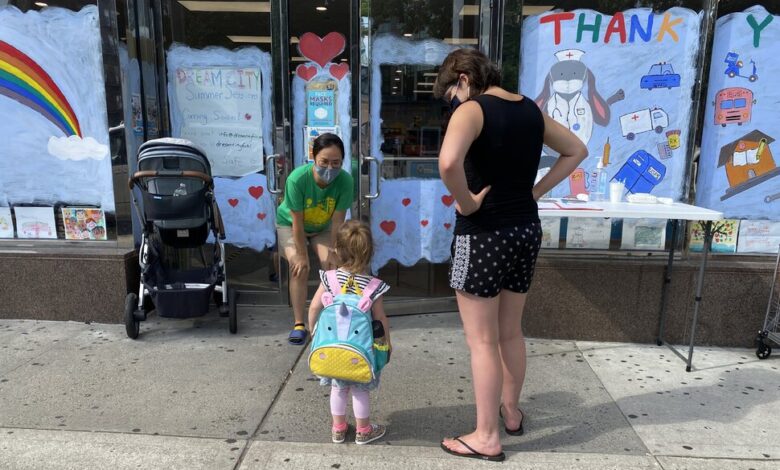Child Care Industry Struggling Two Years Into the Pandemic

Could the economy survive without child care? With Democrats’ promises to spend $400 billion on child care as part of the “Build Back Better” bill having fallen through, one group of activists led a nationwide series of protests Monday to show people how much the country depends on child care.
Dubbed “A Day Without Child Care,” the effort by the group Community Change saw around 50 community events across the country where teachers and families celebrated child care and demanded a more affordable, equitable system with living wages for child care workers. Some child care centers shut down for the day or a few hours in protest while others held community events and involved families in outreach to government officials.
As data shows, the pandemic packed a wallop against the child care industry, and the workforce has still not recovered. In March, two years into the pandemic, 117,000 fewer child care jobs were available in the U.S. than in February 2020, according to the Center for the Study of Child Care Employment.
“We are still having humongous struggles with hiring teachers. I still have a classroom I cannot open because we are not able to hire teachers,” says Rochelle Wilcox, CEO for the Wilcox Academy of Early Learning – a network of child care centers in New Orleans.
Wilcox didn’t shut down her centers during the protest – most of the families who use her services have low incomes and could lose their jobs if they miss work because of child care issues. However, she says she stands in solidarity with the movement, as she’s seen firsthand the struggles of trying to keep her programs fully staffed. In the past, she’s had to forgo her own salary to keep her centers open.
“We are hand in hand with the economy, and we are just not respected as such. … Doctors, lawyers, nurses, sanitation workers – none of those people can go to work if they don’t have anywhere to put their children,” Wilcox says.
One report from Child Care Aware of America found that almost 9,000 child care centers in 37 states and 7,000 licensed home-based centers in 36 states had closed between December 2019 and March 2021. A survey of child care providers last summer from the National Association for the Education of Young Children found that 80% of respondents reported staffing shortages – and the vast majority cited low wages as the reason why. The national average wage for a child care worker was $12.24 an hour in May 2020, according to Child Care Aware.
Illustrating the challenges that come with such low wages, a Stanford University survey of around 800 child care providers in March found that more than 1 in 3 providers struggled to pay for necessary expenses like food, housing or utility bills.
“I’m 52 and have NO savings and no retirement because of my choice to continue to care for children,” said one child care provider in Wisconsin anonymously quoted in the survey. “During the pandemic I’ve cared for children without pay, taken reduced pay, gave up vacation time, etc. I’m emotionally and physically drained. Something needs to change.”
Even when centers are open, capacity is often down. Researchers from Columbia University illustrated this trend starkly when they analyzed cellphone data to track the number of in-person visits to over 80,000 child care centers around the U.S. As of February, around a quarter of child care centers in the country were still seeing at least 50% fewer visits than they saw a year earlier.












